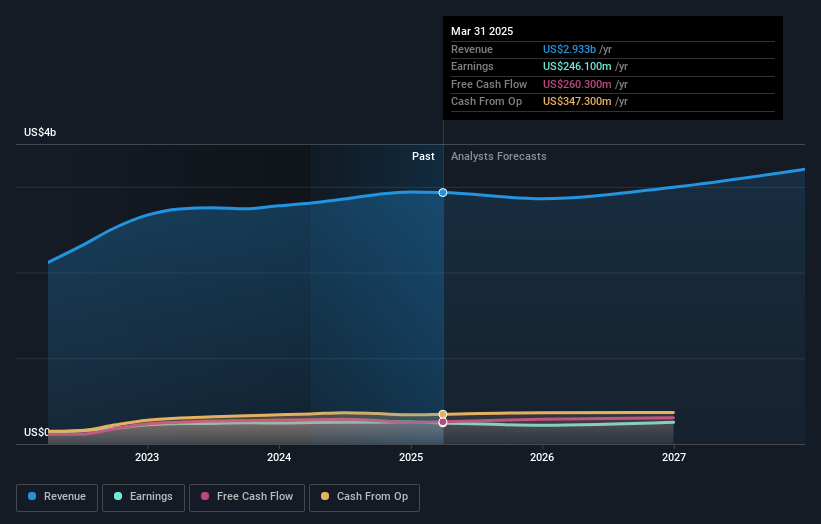
Last week, you might have seen that Installed Building Products, Inc. (NYSE:IBP) released its first-quarter result to the market. The early response was not positive, with shares down 5.8% to US$161 in the past week. It was not a great result overall. While revenues of US$685m were in line with analyst predictions, earnings were less than expected, missing statutory estimates by 12% to hit US$1.64 per share. Following the result, the analysts have updated their earnings model, and it would be good to know whether they think there's been a strong change in the company's prospects, or if it's business as usual. So we gathered the latest post-earnings forecasts to see what estimates suggest is in store for next year.

Following the recent earnings report, the consensus from ten analysts covering Installed Building Products is for revenues of US$2.86b in 2025. This implies a discernible 2.4% decline in revenue compared to the last 12 months. Statutory earnings per share are expected to drop 12% to US$7.89 in the same period. In the lead-up to this report, the analysts had been modelling revenues of US$2.91b and earnings per share (EPS) of US$9.06 in 2025. So there's definitely been a decline in sentiment after the latest results, noting the substantial drop in new EPS forecasts.
See our latest analysis for Installed Building Products
The consensus price target held steady at US$188, with the analysts seemingly voting that their lower forecast earnings are not expected to lead to a lower stock price in the foreseeable future. There's another way to think about price targets though, and that's to look at the range of price targets put forward by analysts, because a wide range of estimates could suggest a diverse view on possible outcomes for the business. There are some variant perceptions on Installed Building Products, with the most bullish analyst valuing it at US$225 and the most bearish at US$145 per share. Analysts definitely have varying views on the business, but the spread of estimates is not wide enough in our view to suggest that extreme outcomes could await Installed Building Products shareholders.
Another way we can view these estimates is in the context of the bigger picture, such as how the forecasts stack up against past performance, and whether forecasts are more or less bullish relative to other companies in the industry. We would highlight that revenue is expected to reverse, with a forecast 3.2% annualised decline to the end of 2025. That is a notable change from historical growth of 14% over the last five years. Compare this with our data, which suggests that other companies in the same industry are, in aggregate, expected to see their revenue grow 4.1% per year. So although its revenues are forecast to shrink, this cloud does not come with a silver lining - Installed Building Products is expected to lag the wider industry.
The Bottom Line
The most important thing to take away is that the analysts downgraded their earnings per share estimates, showing that there has been a clear decline in sentiment following these results. On the plus side, there were no major changes to revenue estimates; although forecasts imply they will perform worse than the wider industry. There was no real change to the consensus price target, suggesting that the intrinsic value of the business has not undergone any major changes with the latest estimates.
Following on from that line of thought, we think that the long-term prospects of the business are much more relevant than next year's earnings. We have forecasts for Installed Building Products going out to 2027, and you can see them free on our platform here.
Even so, be aware that Installed Building Products is showing 1 warning sign in our investment analysis , you should know about...
Have feedback on this article? Concerned about the content? Get in touch with us directly. Alternatively, email editorial-team (at) simplywallst.com.
This article by Simply Wall St is general in nature. We provide commentary based on historical data and analyst forecasts only using an unbiased methodology and our articles are not intended to be financial advice. It does not constitute a recommendation to buy or sell any stock, and does not take account of your objectives, or your financial situation. We aim to bring you long-term focused analysis driven by fundamental data. Note that our analysis may not factor in the latest price-sensitive company announcements or qualitative material. Simply Wall St has no position in any stocks mentioned.